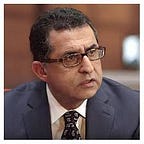Seven Principles In The Art Of Communication
This article was originally published on Forbes.com on February 1st, 2022
Communication is the bridge between ideas and results, between visions and reality. Fail to master it and compromise your future.
Whether you are articulating the value of your services or products across social media, on product labels, over the phone or in-person over lunch, you must be effective before a “buy” happens. High-powered negotiations will be fruitless if you fail to communicate what is in it for them. Your employees can’t turn your vision into reality if you cannot effectively communicate what they should do, how to do it and why.
Communication is the fuel for progress. It is the glue that links your thinking to your success. The challenge, however, is to make sure it has actually taken place — the intended message was received and the intended action taken. The next challenge is to have effective communications more than once — communications that are consistently understood and trigger actions.
To master the art of communication, consider these seven principles.
1. Variability
Communication is a two-way street. As you express, your audience must be able to receive and act upon your message.
Communication is situational. So, your approach to communicating should be situational, too. Communication must be variable but consistent: variable in the way it takes place and consistent in the message. Variability is rooted in knowing your audience. It is not just what you say, but how you say it that matters. Common language, tonality, timing, body language, connection to reality and achievability matter. Your past and future actions also matter.
People and situations are different, so choose variability in communication.
2. Flexibility
To be flexible, you must change your frame of reference in order to be understood and effective.
Being flexible is about your mindset. It is about going from “they don’t understand” to “I am not expressing effectively.” To be flexible is to always be on a journey to discover common ground — a place of clear understanding.
Every communication event is a negotiation, an offering of an exchange of value. You have an idea you want your audience to receive and act upon because there is something in it for them, an exchange.
Remain flexible to discover and be ready to exchange.
3. Authenticity
Authentic leaders communicate authentically. You are authentic when you have clear, repeatable and understandable values. This requires constancy in desires and approaches that people can count on. Authenticity leads to trust, and authentic leaders are trusted, listened to and followed. Communications that are trusted are valued and acted upon. People are usually willing to exchange their situations for one that is better. However, they must trust that you are the one to listen to and follow — the leader who can help them get to an improved situation.
Authenticity and trust are always at the heart of effective communications with lasting effects.
4. Specificity
Confusion breathes confusion, and generalities are grounds for miscommunication. A vision without a road map and demands without reasons are ingredients of a missed opportunity to communicate. Be specific in your communication in order to be effective. Be specific about the what, when, how, who and, most importantly, the why.
Specificity leads to better questions and improved understanding. It triggers more clear actions and better definitions of success. Your audience is looking for success, so be specific on what success looks like and give your communication an actionable purpose.
5. Inspirational
Communication is not an isolated event. Every communication is placed between past behaviors and future actions. However, at present, every communication has a unique context, and if it is worth having, it deserves contemplation.
Asking people to repeat what you just said guarantees neither understanding nor acceptable results. It often conveys a lack of trust! Boxing your communication into specific time slots (e.g., replying to email only one hour a day) or methods (e.g., Slack, corporate memos, inspirational talks, etc.) does not guarantee effectiveness either.
Blindly adopting communication approaches used by others in different situations and organizations, and with different audiences and purposes, jeopardizes effectiveness.
Communication is an art and not a formula to optimize. Don’t look for “canned” methods of communication. Inspire people to want to understand your every interaction; inspire them to act. Inspiration drives self-selected actions, which should be the end goal of any communication.
Inspirationally communicate to trigger action and don’t limit your message by preconceived assumptions.
6. Duality
Effective communication is much more than imparting sound logic. Great communicators balance emotions and logic. They realize the duality of human nature. They aim to reach an equilibrium between cause, passion, achievability and time constraints. Your audience includes people with fears and aspirations as well as capabilities and limitations — unique people who desire to accomplish within organizations with different cultures.
Your logic may appeal to their right brain where analytical and methodical thinking prevails. However, it is their left brain, where creativity rules, that drives them to embrace your communication with their heart and strive for passion-driven outcomes.
To communicate effectively, recognize the duality of your audience.
7. Verifiability
Every communication triggers an exchange of value between you and your audience, whether during a high-stake negotiation or with your employees regarding mundane tasks. To ensure effectiveness, realize the exchange and confirm the end goal and how to measure it. In communication as well as every other aspect of life, what gets measured gets done. Communication, like every other process, must have a verifiable key performance indicator (KPI) that is defined during the communication. Communication is effective when the understandings of success are the same in your mind and in your audience’s.
Without effective communication, your future is compromised. Effective communication connects your past to your future and offers a road map to those sharing the journey with you (your audience) — those who can help you get results. Communicate poorly and face a likely demise in your business. Communicate well to evolve effectively.
